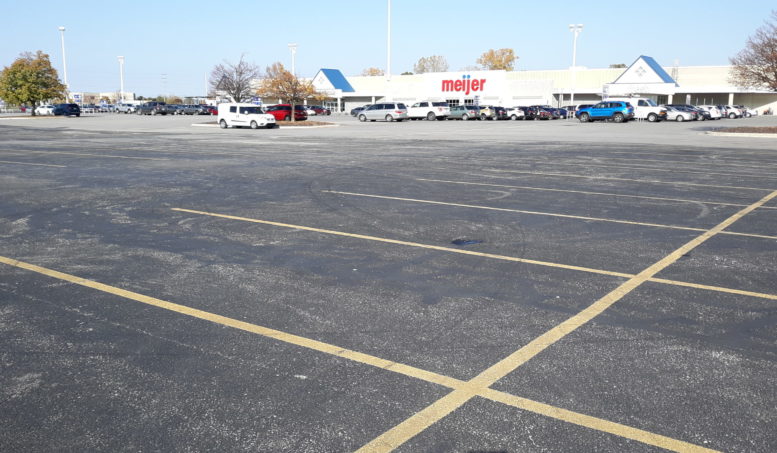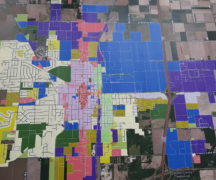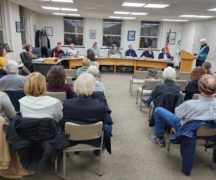By JAN LARSON McLAUGHLIN
BG Independent News
Bowling Green’s current parking requirements for businesses have created oceans of unused asphalt around the city.
So the city’s zoning code update may throw out requirements for parking spaces at businesses, according to the city’s Planning Director Heather Sayler.
“We just require too much parking,” Sayler said. “Too many seas of asphalt that are hardly used.”
During a city planning commission meeting last week, Sayler introduced the idea of removing parking space requirements from the updated zoning code. ZoneCo, the consultant helping the city with the update, suggested that Bowling Green consider the concept that is being adopted in many other communities.
Currently, the city’s zoning code requires industrial sites to provide parking spaces for peak shifts of employees.
For big box retail stores, like WalMart and Meijer, the requirements have resulted in parking lots that never even get close to capacity.
And for a fast-food restaurant like McDonald’s, the rules require 15 parking spaces for the first 1,000 square feet, one additional space for every 100 square feet over that, and at least eight stacking spaces for a drive-thru.
The formula used to calculate the required parking spaces for businesses, schools and churches is based on building use, zoning and other factors. There are no parking space requirements for the downtown area.
“It’s complicated. It makes it really hard for businesses to figure out,” Sayler said. “It doesn’t make sense across the board.”
And that tends to be a barrier for prospective businesses.
The current parking space requirements create “heat islands,” and stormwater issues. Plus, “it’s not the best use of land,” Sayler said. They are expensive to build and to maintain.
If the city does get rid of parking space requirements, it would maintain its rules for shade trees, buffering and screening of parking lots, she explained.
Elsewhere, communities are getting rid of parking space rules – and relying on businesses to provide the parking they need.
“It doesn’t mean a business owner is going to build a business with no parking,” Sayler said. “They typically know their own needs for parking.”
The new trend plans for people over parking, she said.
“Several communities are doing this and it is working,” Sayler said. “What’s best for Bowling Green moving forward? Is the community OK with removing them all together?”
Times have changed since the 1970s when the city’s zoning code was adopted and cars were king. While automobiles are still a must for most people in Bowling Green, fewer young people are getting driver’s licenses, Sayler said.
More people are walking, biking, using ride services, and relying on food and grocery delivery systems.
“Times are changing – not everyone wants to drive,” Sayler said. “In the 70s, they planned for parking. We are planning for people.”





